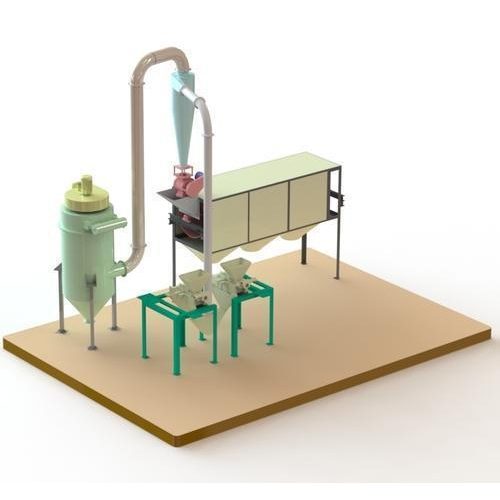Project Report For Besan plant
Introduction
Project Report For Besan Plant is as follows.
Besan is made mostly by grinding Chana Dal. This is a really vital food. It is high in protein and vitamins.. Besan is a substance made by crushing, drying, and dehydrating Bengal Gramme. Besan is a type of gram flour that is commonly consumed in India. It is yellowish in hue and has a distinct gram taste and smell. Because it is manufactured entirely of chickpeas, chickpea flour is naturally gluten-free. It also contains a lot of protein, fibre, and other vitamins and minerals.
The protein-rich, dried and decuticled bengal gramme, chana dal, or chickpea is ground into a bright yellow flour known as Besan or Gramme Flour. Besan is a popular pulse flour found in many recipes throughout the Indian subcontinent and the Western world. It is found in a wide range of dishes, snacks, and sweets all throughout the world. Sattu, or roasted chana dal flour, is a classic Northern Indian dish. With so many uses, it is vital to understand each requirement and execute the milling process with care.
It is planned to generate 30 MT of besan per day, or 900 tonnes per year. The factory would process 37.5 MT of Bengal gram per day to generate 30 MT of besan per day. Husk and other process losses such as moisture and dust clearance will account for the remaining 7.5 MT. 17 MT of the 30 MT besan will be ultra fine A-grade, with the remaining 13 MT being B-grade besan.
Depending on the material, we may construct a Besan Plant with a small capacity of 100 kg/hr to a huge volume of up to 3000 kg/hr for 99% passing. With the addition of accessories, our Besan Plant can create a wide range of Besan flour output grades such as motichur, garghara, fine, and superfine grades. We also sell Sattu plants and roasted gram dal plants.
The gram must be free of stones, broken grains, and other contaminants. Remove the other colored gram halves based on the physical qualities of the gram dal. If there is any water content, it should be removed by drying to a minimum moisture level of 12 to 14%. For milling, a progressive milling method should be used, and the operation should include breaking, scalping and purification, reduction, and dressing.
The flour is then sieved via a series of sieving machines to produce super fine and fine grade material. The separated husk is collected from other chutes, while the other sieved coarse material is fed back into the roller machine for milling. Finished excellent flour (besan) is sometimes blended to get the appropriate quality and homogeneous features, attributes, and colour.

Market Potential Of Besan Plant
The global market for chickpea flour is estimated to reach $5.2 billion by 2027, growing at a 4.3% CAGR between 2022 and 2027.
A variety of macroeconomic and microeconomic factors continue to influence the worldwide chickpea flour market. Growing knowledge of the health and wellness benefits of chickpea flour is driving uptake in industrialised countries. Chickpea flour is a staple in many Asian nations, particularly India, and is used in the making of various dishes.
The increased consumption of various pulses and bread items in various countries is driving worldwide pulse demand. Besan, with an annual production volume of more than 5 million tonnes, is a high-potential market in India, accounting for more than half of the approximately 10 million tonnes of desi chickpeas produced in the country.
Besan market demand is heavily influenced by the freshness, uniformity, and fineness of the grinding process. The area is the largest user of pulses, with nations such as India, China, Australia, Japan, Myanmar, Thailand, the Philippines, and Malaysia contributing to the high consumption of diverse culinary products made with pulse ingredients.
